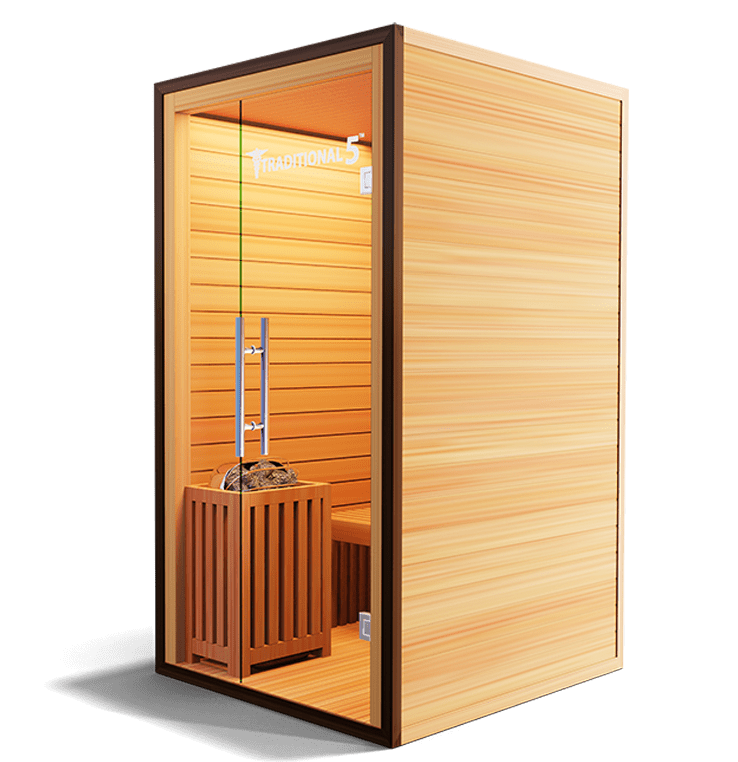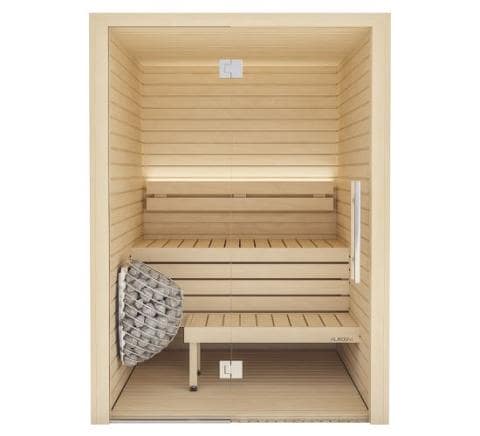Traditional Sauna Fundamentals Explained
Traditional Sauna Fundamentals Explained
Blog Article
What Does Traditional Sauna Do?
Table of ContentsExcitement About Traditional SaunaThe Only Guide to Traditional SaunaThe Facts About Traditional Sauna UncoveredTop Guidelines Of Traditional Sauna
The majority of the weight lost in a sauna is water loss and is re-gained upon rehydrating. Nonetheless, certainly sauna can be a fundamental part of a healthy and balanced fat burning program. To look at the differences in between traditional and IR saunas, I will certainly divide these into proven, academic, and made differences.Thus, the hottest point in the saunawhich goes to the ceiling directly over the sauna heateris typically in between 185 and 190 F. Traditional Sauna. Claims that a traditional sauna surpasses 200 F is simply not real and not appropriate for electric saunas sold in the US. The temperature for a far-infrared sauna is usually set in between 120 and 140 F; nevertheless, unlike the conventional sauna, the goal in and IR space is not to achieve a heat
Since of this, the temperature level difference is virtually unnecessary, because profuse sweating causes both sauna types, yet the technique of warming the body is various. In an IR sauna the bather will really feel hot and will certainly sweat profusely, yet at much lower temperature levels. Thus, if the objective is to spend longer durations of time in the sauna, the IR sauna is a great selection.

The Ultimate Guide To Traditional Sauna
When the heat is achieved, the elements cycle on and off to maintain the high temperature level. Most conventional sauna individuals take pleasure in putting water over the rocks to produce heavy steam to increase sauna humidity levels. The benefits of pouring water over the rocks include: making the room more comfortable, moistening the nasal flows, and permitting the usage of aromatherapy by blending necessary oils with the water.
In a far-infrared sauna, the warm front penetrate the body to efficiently heat up the body and raise the body core temperature. To achieve this enhanced temperature level, Far-infrared emitters develop infrared power which is close to the very same wavelength as that which the body normally emitsoften referred to as the "Important Range" of 7 to 14 microns), so the power is well obtained by the body.
When the power goes into the body, it triggers the body temperature to raise and eventually leads to sweat. In an infrared sauna it is necessary for the emitters/heaters to stay on nearly constantly. Since there is no mass of rocks to maintain heat, the sauna will certainly cool down if the emitters shut off.
As discussed over, the sauna bather in an infrared space internet wants to place himself in front of running emitters to get maximum advantage from the warm. The heating time for both spaces can be very various, depending upon how the areas are utilized. For a conventional sauna, a bather should permit 30-40 minutes for the room to attain a preferred temperature level and to appropriately pre-heat the rocks.
The Of Traditional Sauna
A well created sauna will generally accomplish a temperature of 150-160 F in regarding 30-40 minutes (Traditional Sauna). For hotter temperature levels, the area may need to warm for a longer period. Once the area attains established temperature level, the heater will certainly cycle on and off, typically running regarding 50% of the moment. The insulated walls and the heated rocks will certainly maintain the area warm and at steady temperature levels.
To some, 15 minutes was "squandered" while the infrared power heated up the wood panels instead of heating up a body, while others discover a pre-heated room to be more comfy and think a raised beginning temperature level is necessary to begin perspiring. The length of recommended use for each area is around the very same (10-15 mins per session); nevertheless, as a result of the lower air temperatures and the capacity to feel the effects of infrared warm faster than a typical sauna, it is not unusual for an individual to spend an overall of 20-30 minutes in an infrared sauna.
Conventional saunas have a tendency to be larger (hence use even more electrical power) than infrared saunas, although standard saunas are definitely offered in one and two person dimensions also. For a two-person typical sauna, visit this web-site 5x6 or 5x7 dimension is most popular. The leading bench can pleasantly seat 2 or three individuals and is likewise long enough to relax throughout the sauna session.


The typical expense per kWH of electricity in the U.S. is approximately $0.11, so a 4.5 kW heating unit will cost approximately $.50 to compete one hour, if the heater runs constantly for one hour. Generally a sauna heating system will run for 75% of the initial hour and 50% of subsequent hours on given that the elements cycle once the established temperature level is achieved.
What Does Traditional Sauna Do?
A 2 individual far-infrared area is usually physically smaller than a typical sauna, frequently regarding 4' x 4' or smaller. The IR heater is usually 1.5-1.7 kW making use of a 120 volt 15 amp plug-in solution. Since the room can be used sooner than a sauna room, we will assume the area is made use of for to of an hour consisting of warmth up time.
Ultimately, there is a hardly ever reviewed distinction in the social experience in between both spaces. While our culture has shed several of the social benefit of the typical sauna experience, it can be extremely socially rewarding. From family members time in the sauna, to heart-felt conversations with loved ones, to sauna partiesthe conventional sauna experience can result in intimate interacting site socially.
A lot of higher end infrared rooms consist of colored light treatment, noise systems and full-glass fronts.
Report this page